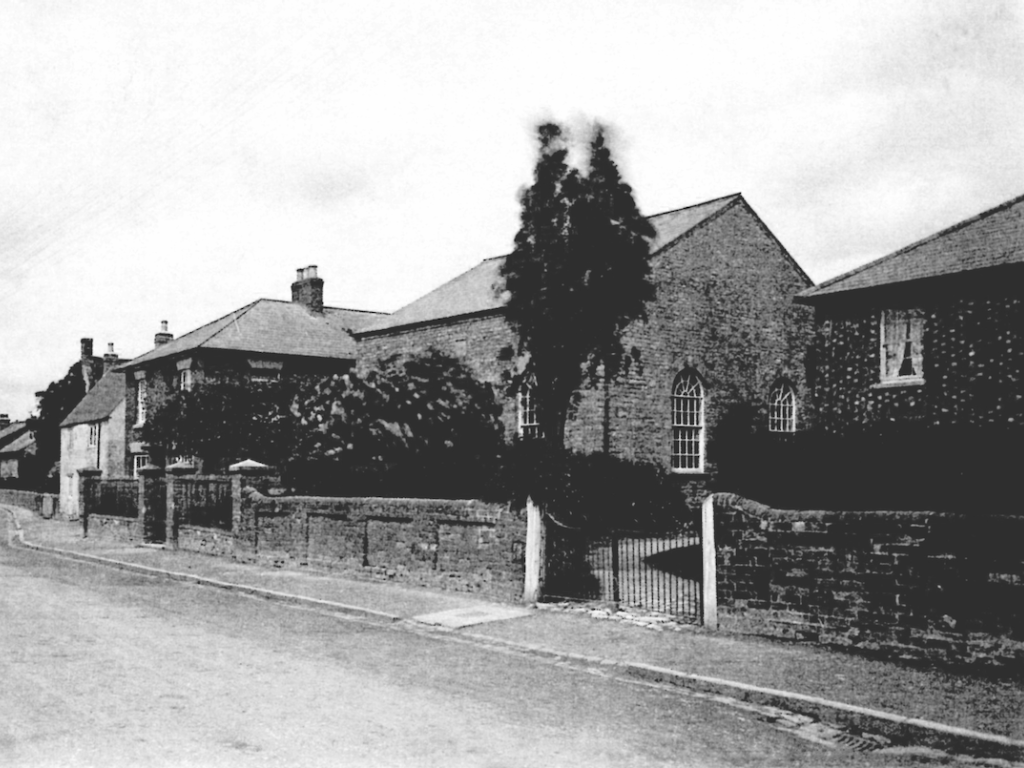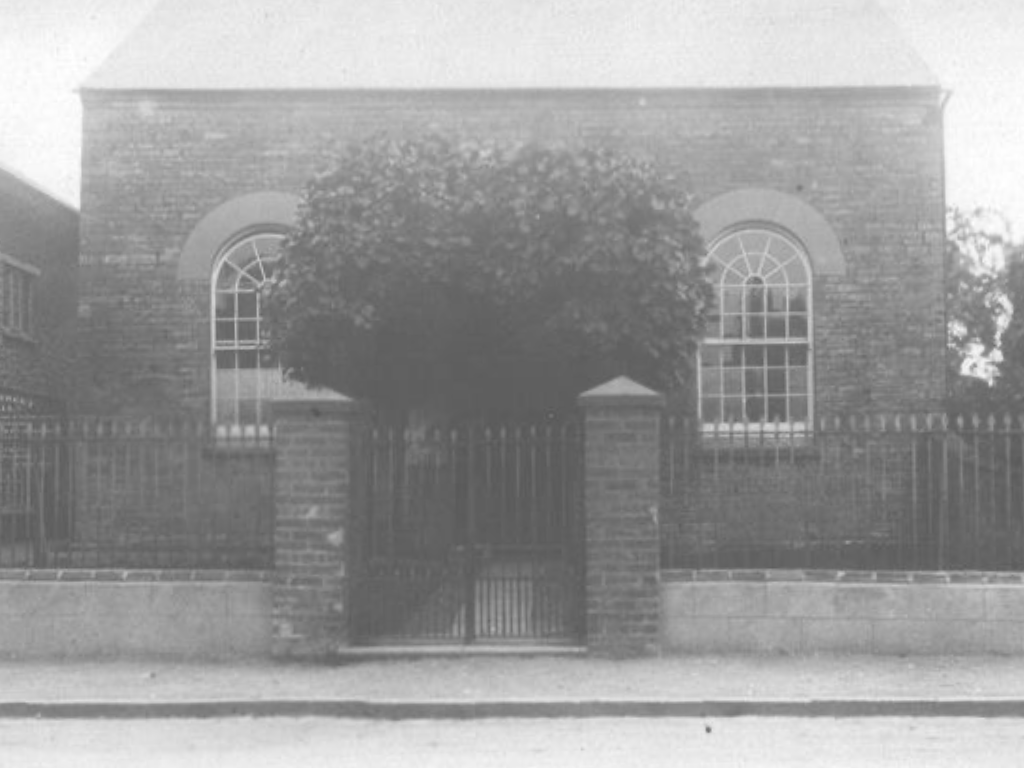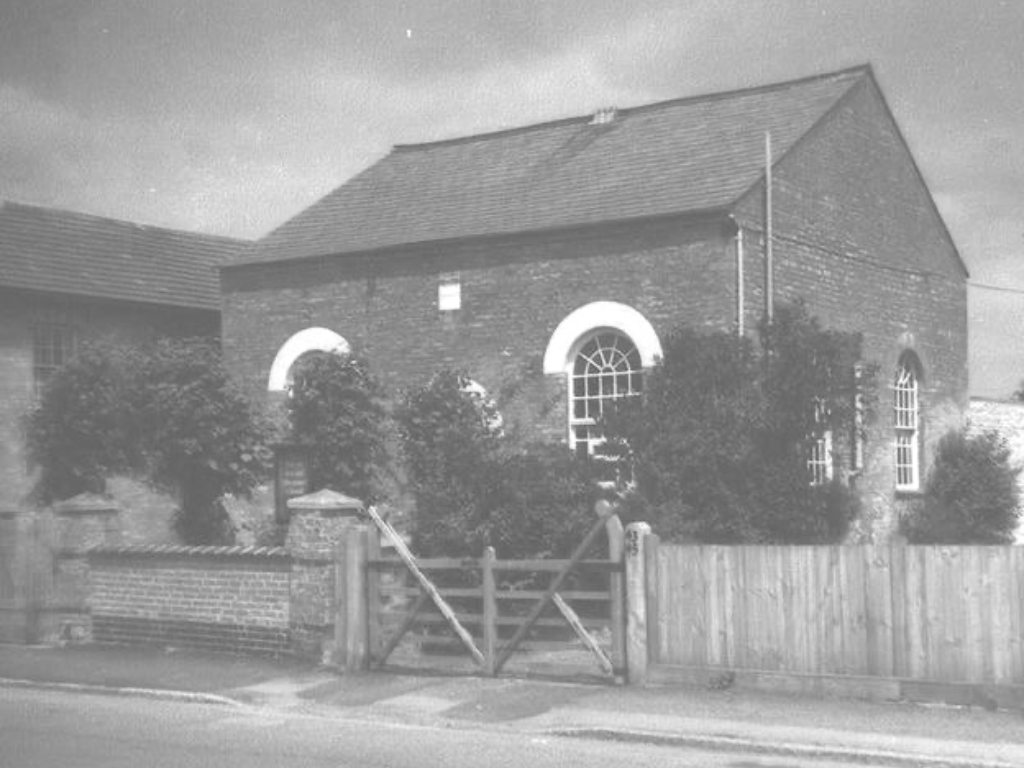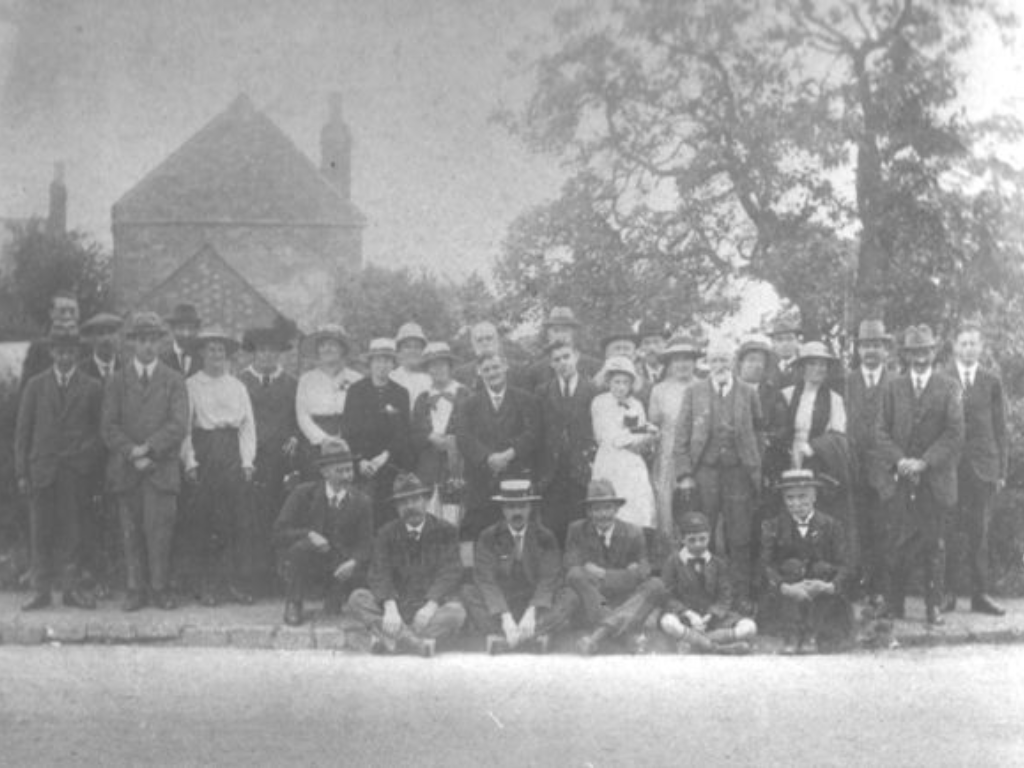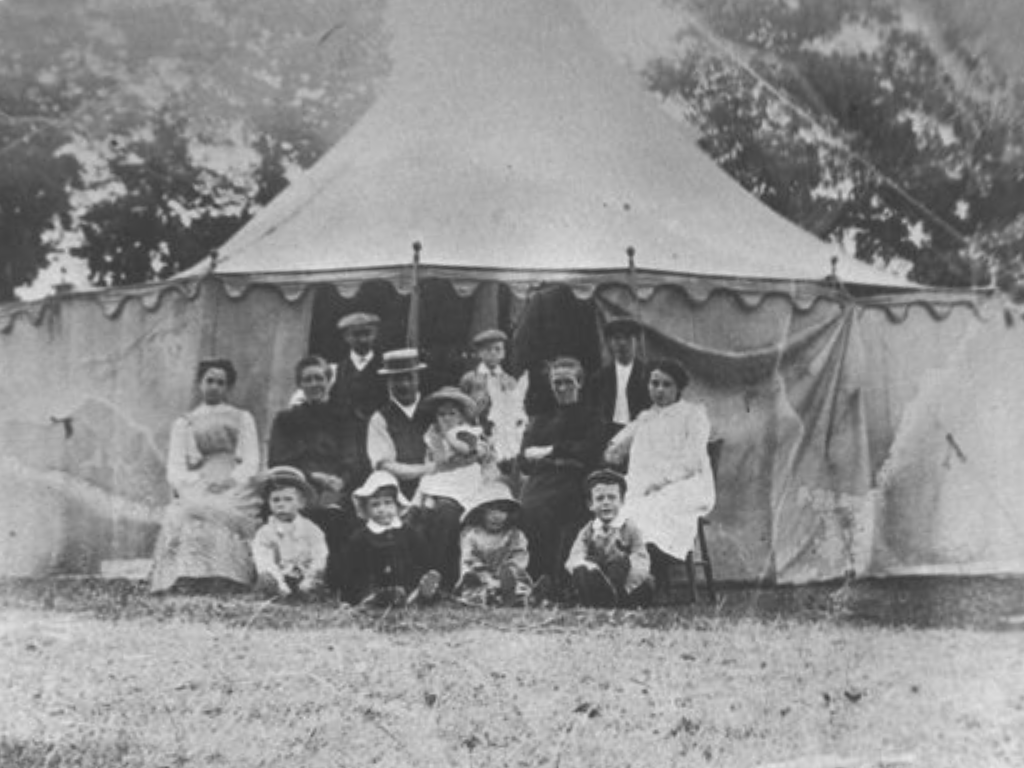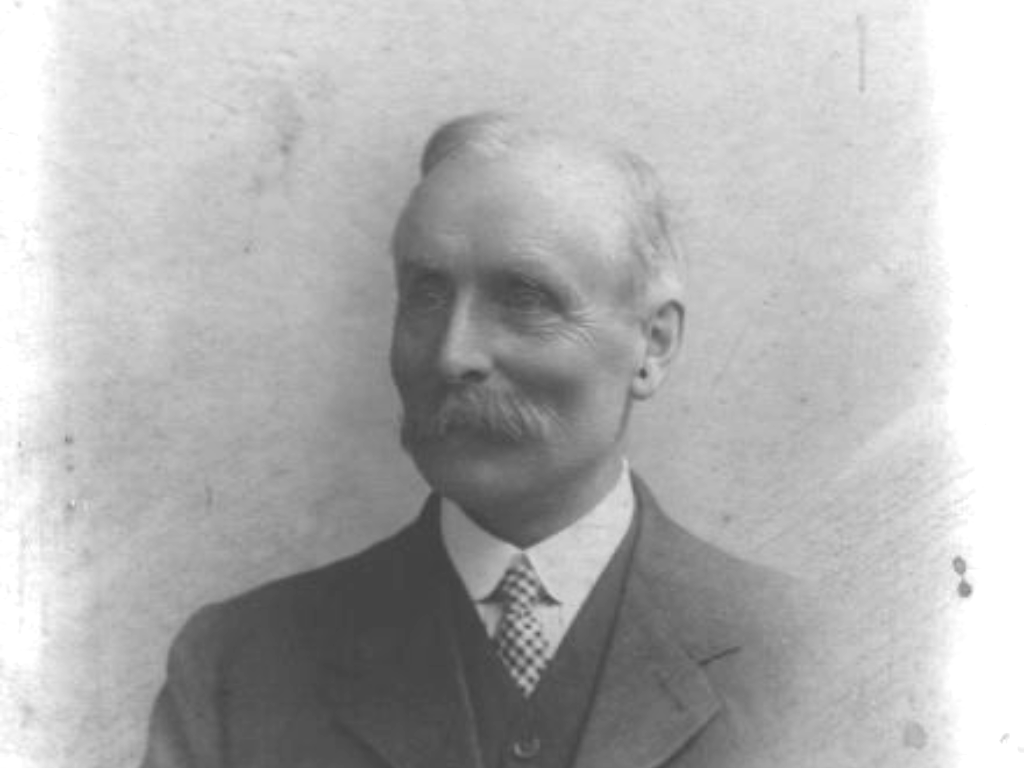Our History
“…hitherto hath the LORD helped us.”
1 Samuel 7:12 (The Holy Bible)
The origins of the assembly in Hanslope can be traced back to 1882. Between 1882 and 1892, a man called John Orr-Ewing lived at The Rookery, Preston Deanery. Mr Orr-Ewing was a single man and had moved to the area from Weston-Super-Mare. The local squire, Edward Singleton, lived nearby in Preston Deanery Hall. Both of these men were born again believers, Mr Singleton having been a member of the assembly at Duke Street, Northampton.
Mr Orr-Ewing had a special interest in the village of Hanslope and during the spring of 1883 he hired a small Church of England Mission Hall in Long Street, Hanslope (the building is still standing) on several occasions for the preaching of the Gospel. However, the room was very small and so the decision was taken to find a suitable site where a Gospel tent could be pitched.
Mr Orr-Ewing made contact with Joseph Gregory who lived in Hanslope, close to what is now the entrance to St James Close. Mr Gregory agreed to a tent being pitched in his orchard, and this took place in mid-June 1883.
For ten weeks, the Gospel was preached on a nightly basis by Mr Orr-Ewing, Mr Edward Stack, Mr John Brunton (formerly a soldier in the 18th Hussars) and Mr Charles Moreton. As a result, many people were spiritually blessed, amongst them members of the Slade family of Green End Farm, Hanslope.
The tent was taken down at the end of 1883 and somewhere permanent was then required for the believers to continue to meet. At the time there was a ‘Public Room’ at number 43 High Street, Hanslope and the believers were able to hire this for their weekly meetings. They continued to do so until 1914 when they started to meet in the current hall. The building that housed the ‘Public Room’ still stands, although its appearance has changed considerably over the years. There were originally no windows downstairs, as the lower rooms were used for the storage of coal and other items. The ‘Public Room’ occupied the whole of the first floor. During these early years, Mr John Orr-Ewing was a great help to the assembly, travelling from Preston Deanery on a regular basis in his pony and trap.
During the 1880s, the Slade family owned a property in Higham Cross Road, Hanslope. The property was rented out to the Ansell family, Mr and Mrs Ansell senior living in one end of the property whilst their married son Jack, lived with his wife and family in the other. Mr Ansell, who worked as a shoe maker, kept cows, pigs and sheep in a paddock at the rear of the property. The central section of the property contained a laundry which was run by Mrs Ansell. She employed several ladies in the laundry business, including her own daughter Sarah.
During the 1880s, Sarah Ansell was saved through the preaching of Mr Walter E Willey of Ealing, London, who would visit the believers at Hanslope to preach the Gospel and teach the Word of God. Sarah would often finish work at the laundry and run to the ‘Public Room’ in time for the meeting.
Another visiting preacher at this time was Mr Horton who lived at Berkhamstead. He would travel by train to Castlethorpe station and then walk up to Hanslope for the Breaking of Bread. He would minister the Word in the afternoon and preach the Gospel at 6pm before walking back to Castlethorpe station to catch the train home.
On Bank Holiday Monday, August, 1908 the assembly held its first conference in a tent belonging to evangelist Mr Arthur Lawes opposite Green End Farm, Hanslope, the home of the Slade family. The conference lasted all day.
The current hall in which the assembly meets was erected in 1809, originally as a Strict and Particular Baptist Chapel.
In 1913 the hall was sold by auction at the Watts Arms, Hanslope to William Slade. At the time it was in an empty and derelict state. Mr Slade paid £150 for the hall with the intention of using it for assembly meetings for which a rent would be paid. His brother Richard purchased the pews for the hall for £5. In 1923 Mr Slade sold the hall to a trust comprising those in the assembly at the time. The first assembly gathering was a conference which was held on Saturday 4th August 1914, the same day that World War I started!
Over the years the assembly benefited from the help given by various visiting brethren. One of these was Mr Arthur Lawes. Mr Lawes was born in 1851 and ‘born again’ in 1867. He commenced his work as an evangelist in 1884 at the age of 33. He was greatly used of God and was a great help to the believers at Hanslope. Mr Lawes died in 1928.
Another regular visitor was Mr Luther Rees who, as a young man, was a heavyweight boxer. Whilst standing in his corner prior to a big fight one day, he came under the conviction of sin so intensely that he was unable to continue. He was subsequently ‘born again’ and became an able servant of God. He was a ‘man’s man’ and many were brought to Christ through his preaching. He was also an able minister of the Word of God. In 1914 he shared the platform at the first conference of the Gospel Hall with Mr Arthur Lawes and Mr J M Shaw.
The assembly continues to meet in the same building in Gold Street, Hanslope to this day. Its external appearance remains largely unchanged. However, in the late 1970’s, the old vestry and external lavatory at the rear of the building were demolished. A large ante-room, with a kitchen area at one end, was constructed in their place.
The building underwent a further programme of restoration and refurbishment in 1984/85 during which 5 new windows were installed. The entrance area was redesigned and new toilets installed. The wooden floor in the main hall was replaced with a concrete floor and a new pulpit was installed. A hatch was cut through the ceiling and a walkway constructed across the roof space. Prior to this the only access to the roof space was through an external door in the gable wall of the building. The front doors were subsequently replaced in 1987.
In 2008 the assembly carried out further works to the building in preparation for its bicentenary in 2009. These works consisted of a new, separate kitchen, the modernisation of the toilet facilities, the installation of a new heating system and new lighting throughout. New chairs for the main hall were also acquired and the whole building re-carpeted. Outside, new lighting and a new notice board were installed. As the hall is now a listed building all these refurbishment works required detailed approval of the local authority to ensure that they were consistent with and indeed enhanced the character of the building.
